-
 Bitcoin
Bitcoin $82,422.7980
-3.07% -
 Ethereum
Ethereum $1,847.8527
-2.37% -
 Tether USDt
Tether USDt $0.9994
-0.04% -
 XRP
XRP $2.0729
-6.17% -
 BNB
BNB $603.0129
-4.27% -
 Solana
Solana $125.3687
-4.58% -
 USDC
USDC $1.0004
0.03% -
 Dogecoin
Dogecoin $0.1703
-5.67% -
 Cardano
Cardano $0.6675
-4.70% -
 TRON
TRON $0.2337
1.58% -
 Toncoin
Toncoin $3.6865
-7.87% -
 Chainlink
Chainlink $13.6905
-4.32% -
 UNUS SED LEO
UNUS SED LEO $9.7096
-1.12% -
 Avalanche
Avalanche $19.8706
-2.17% -
 Stellar
Stellar $0.2655
-3.47% -
 Shiba Inu
Shiba Inu $0.0...01270
-3.93% -
 Sui
Sui $2.3342
-8.15% -
 Hedera
Hedera $0.1705
-6.89% -
 Litecoin
Litecoin $85.5696
-2.75% -
 Polkadot
Polkadot $4.0949
-4.43% -
 MANTRA
MANTRA $6.3176
-1.29% -
 Bitcoin Cash
Bitcoin Cash $303.0131
-2.84% -
 Bitget Token
Bitget Token $4.6537
-1.96% -
 Pi
Pi $0.8221
-0.20% -
 Dai
Dai $0.9999
0.00% -
 Ethena USDe
Ethena USDe $0.9992
0.04% -
 Hyperliquid
Hyperliquid $12.4886
-9.08% -
 Monero
Monero $215.7733
-2.33% -
 Uniswap
Uniswap $6.0537
-4.22% -
 Aptos
Aptos $5.3582
-2.68%
How to choose a mining pool suitable for ETC mining?
Choose an ETC mining pool prioritizing high hashrate, reasonable fees, and low latency; consider payment methods, minimum payouts, pool reputation, software compatibility, and support. Pool size impacts reward consistency.
Mar 22, 2025 at 07:08 am
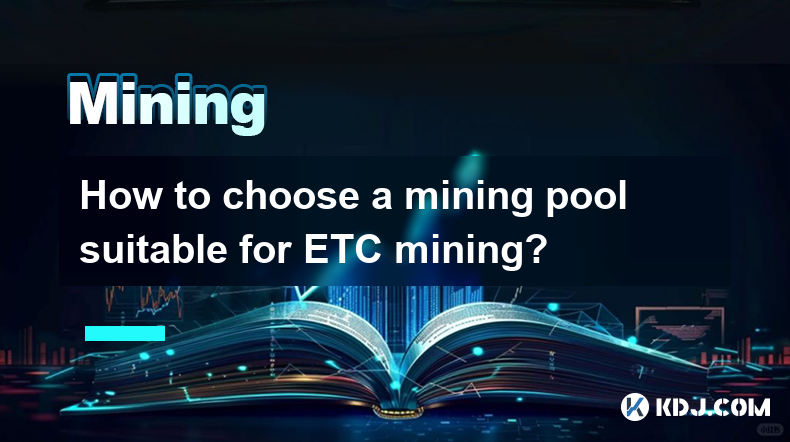
Key Points:
- Hashrate and Fees: Prioritize pools with high hashrate for consistent block rewards and reasonable fees. Avoid pools with excessively high fees that eat into your profits.
- Pool Location and Infrastructure: Consider the pool's server location and infrastructure for optimal latency and reliability. Closer proximity generally translates to faster transaction times.
- Payment Systems and Minimum Payouts: Examine the pool's payment methods (e.g., ETC, other cryptocurrencies) and minimum payout thresholds. Lower minimums allow for more frequent payouts.
- Pool Transparency and Reputation: Research the pool's history, transparency regarding its operations, and overall reputation within the ETC mining community. Look for positive reviews and a track record of fair practices.
- Software and Support: Evaluate the pool's mining software compatibility and the availability of support resources. Good support can be invaluable when troubleshooting issues.
- Pool Size and Distribution: Consider the pool's size and the distribution of its hashrate. While large pools offer higher chances of consistent payouts, smaller pools may offer better profitability in certain circumstances.
How to Choose a Mining Pool Suitable for ETC Mining?
Choosing the right ETC mining pool is crucial for maximizing your profitability and minimizing risks. Many factors influence this decision, and understanding them is key to success. Let's delve into the critical aspects to consider.
Hashrate and Fees: The Foundation of Profitability
The pool's hashrate, representing its total computational power, directly impacts your chances of finding and validating blocks. A higher hashrate generally translates to more frequent payouts. However, you must also consider the pool's fees. Excessively high fees can significantly reduce your overall earnings. Strive for a balance between high hashrate and reasonable fees.
Pool Location and Infrastructure: Minimizing Latency
The geographical location of a mining pool's servers influences latency, the delay in data transmission. A pool located closer to you geographically will generally lead to faster block propagation and reduced latency, potentially improving your chances of receiving rewards sooner. The pool's infrastructure—server quality, network connectivity—also significantly impacts reliability and performance.
Payment Systems and Minimum Payouts: Getting Your Rewards
Different pools offer various payment methods, some paying directly in ETC, while others may use alternative cryptocurrencies. Consider which payment option best suits your needs. Also, pay close attention to the minimum payout threshold. Lower minimum payouts allow you to receive your earnings more frequently, though this might incur higher transaction fees.
Pool Transparency and Reputation: Trust and Reliability
Transparency is paramount. A reputable pool will openly share information about its operations, hashrate, and fee structure. Research the pool's history and reputation within the ETC community. Look for reviews and feedback from other miners to gauge their experiences. Avoid pools with questionable reputations or a history of unfair practices.
Software and Support: Essential for Smooth Operation
Compatibility with your mining software is essential. Ensure the pool you choose supports the software you're using. Reliable support is equally crucial. Problems can arise, and having access to efficient and helpful support can be the difference between a smooth mining experience and a frustrating one.
Pool Size and Distribution: Balancing Risk and Reward
The size of a mining pool is a significant factor. Large pools offer a higher probability of consistent payouts due to their considerable hashrate. However, larger pools also mean that your share of the rewards might be smaller compared to smaller pools. Smaller pools offer potentially higher rewards per share, but carry a higher risk of inconsistent payouts due to their lower hashrate.
Common Questions and Answers:
Q: What is the best ETC mining pool? A: There's no single "best" pool. The optimal choice depends on individual circumstances, such as your hashrate, location, and risk tolerance. Research various pools and compare their features to determine the best fit for you.
Q: How often do ETC mining pools pay out? A: Payout frequency varies across pools. Some pay out daily, others weekly, or even based on reaching a minimum payout threshold. Check the pool's specific payment schedule.
Q: What are the typical fees charged by ETC mining pools? A: Fees vary, typically ranging from 0% to 3% of your earnings. Always review the pool's fee structure before joining.
Q: How can I ensure the security of my ETC earnings from a mining pool? A: Use strong passwords, enable two-factor authentication where available, and only use reputable and well-established pools with a positive track record. Regularly monitor your wallet balance.
Q: Are there any risks associated with ETC mining pools? A: Risks include pool scams, technical issues, and fluctuating ETC prices impacting profitability. Thorough research and due diligence are crucial to mitigate these risks.
Q: What should I do if I have issues with an ETC mining pool? A: Contact the pool's support team to report the problem. If the issue remains unresolved, consider switching to a different pool.
Q: How do I choose between a large and a small ETC mining pool? A: Large pools offer higher consistency but potentially smaller individual rewards. Smaller pools offer the potential for higher individual rewards but carry a higher risk of inconsistent payouts. Your choice depends on your risk tolerance and mining setup.
Disclaimer:info@kdj.com
The information provided is not trading advice. kdj.com does not assume any responsibility for any investments made based on the information provided in this article. Cryptocurrencies are highly volatile and it is highly recommended that you invest with caution after thorough research!
If you believe that the content used on this website infringes your copyright, please contact us immediately (info@kdj.com) and we will delete it promptly.
- XRP (XRP) vs. Shiba Inu (SHIB): Which Token Is the Better Buy?
- 2025-03-29 18:50:12
- Dogecoin (DOGE) price may be preparing to rebound as signs of bearish momentum fade
- 2025-03-29 18:50:12
- MonkeDAO Pioneers Bitcoin Integration: Adopts Solana's zBTC Token for DeFi Innovation
- 2025-03-29 18:45:12
- Terraform Labs to Reimburse Crypto Losses After Terra Collapse
- 2025-03-29 18:45:12
- The Cronos token’s value surged significantly, climbing by as much as 17 percent
- 2025-03-29 18:40:13
- Hyperliquid (HYPE) Price in Turmoil Following the JELLY Incident
- 2025-03-29 18:40:13
Related knowledge
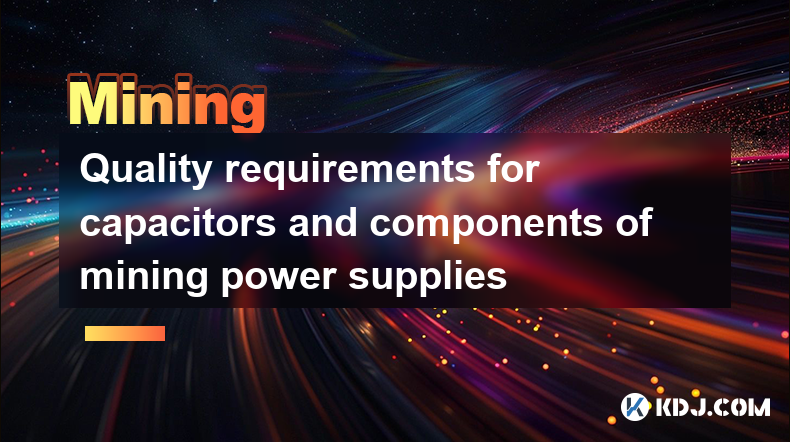
Quality requirements for capacitors and components of mining power supplies
Mar 29,2025 at 02:57pm
The Crucial Role of Power Supply Components in MiningMining cryptocurrencies, especially those using Proof-of-Work consensus mechanisms, demands significant computational power. This translates to a high power consumption, placing immense strain on the power supply units (PSUs) of mining rigs. The reliability and longevity of these PSUs are directly ti...
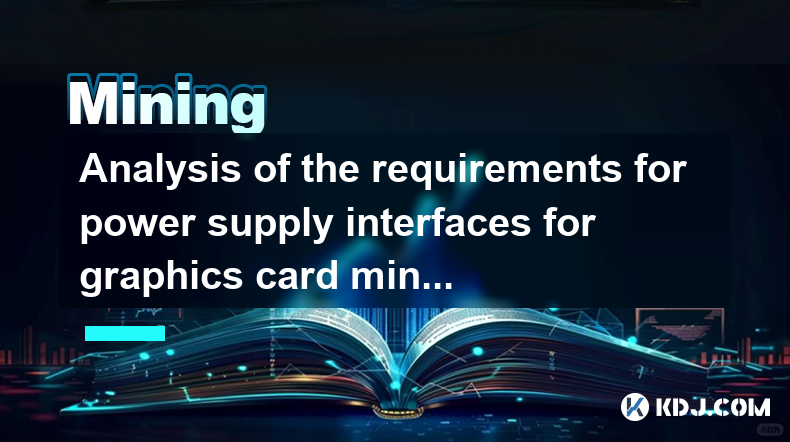
Analysis of the requirements for power supply interfaces for graphics card mining
Mar 29,2025 at 07:35pm
Understanding Power Supply Needs for GPU MiningGraphics card mining, particularly with high-end GPUs, demands substantial power. Understanding the power supply interface requirements is crucial for efficient and safe operation. Different GPUs have varying power consumption profiles and connector types. Failure to meet these requirements can lead to ins...
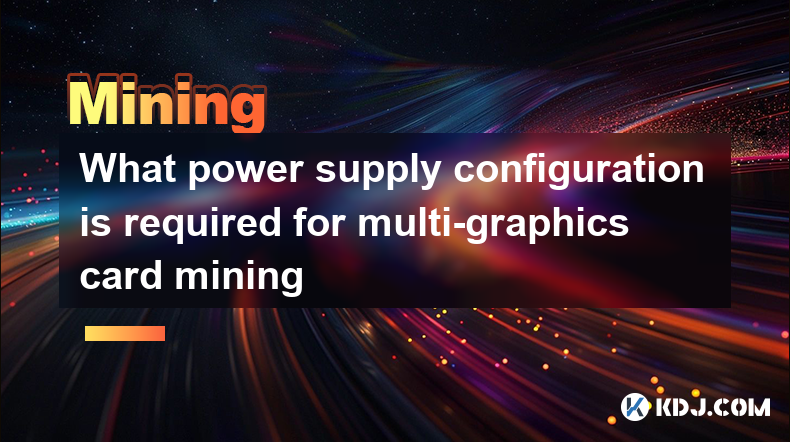
What power supply configuration is required for multi-graphics card mining
Mar 29,2025 at 11:08am
? Power Supply Needs for Multi-GPU Mining RigsMining cryptocurrency, particularly with multiple graphics cards (GPUs), demands a robust and reliable power supply. The power requirements aren't simply the sum of each GPU's TDP (Thermal Design Power). Several other components contribute significantly to the overall energy draw. Understanding these factors...
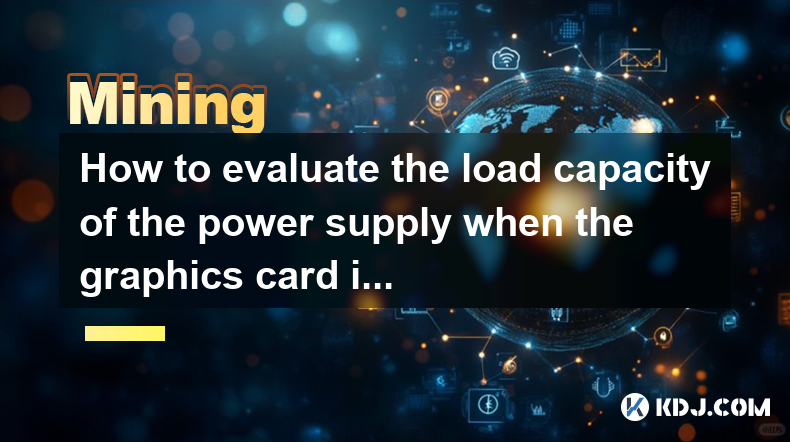
How to evaluate the load capacity of the power supply when the graphics card is mining
Mar 29,2025 at 11:14am
How to Evaluate the Power Supply Load Capacity When the Graphics Card is Mining Understanding Power Consumption in Cryptocurrency MiningCryptocurrency mining, particularly with GPUs, is a power-intensive process. Understanding your power supply's capabilities is crucial to prevent damage to your hardware and ensure stable operation. Insufficient power c...
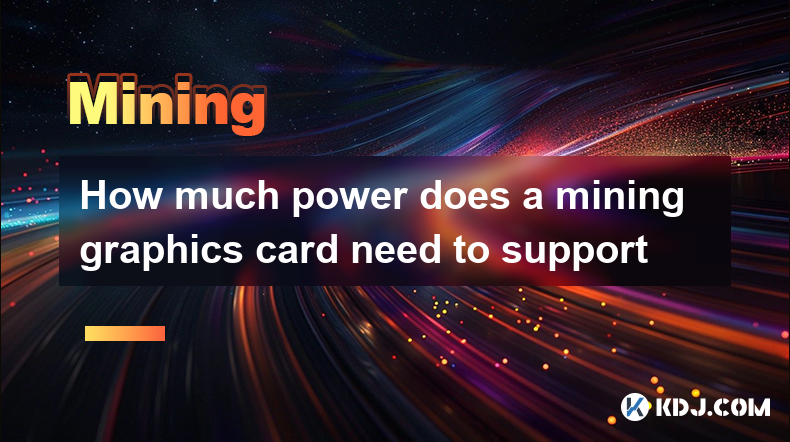
How much power does a mining graphics card need to support
Mar 29,2025 at 04:14pm
? Power Consumption in Cryptocurrency MiningThe power consumption of a graphics card (GPU) used for cryptocurrency mining is a crucial factor determining profitability and operational costs. The power draw isn't a fixed number; it varies significantly depending on several key aspects of both the card itself and the mining operation. Understanding these ...

Profit Model and Equipment Optimization of GPU Mining
Mar 29,2025 at 06:35pm
Understanding the Profitability of GPU MiningGPU mining, particularly for cryptocurrencies like Ethereum (before the merge) and others using similar algorithms, involves using graphics processing units (GPUs) to solve complex mathematical problems, validating transactions, and earning cryptocurrency rewards. The profitability hinges on several intercon...

Quality requirements for capacitors and components of mining power supplies
Mar 29,2025 at 02:57pm
The Crucial Role of Power Supply Components in MiningMining cryptocurrencies, especially those using Proof-of-Work consensus mechanisms, demands significant computational power. This translates to a high power consumption, placing immense strain on the power supply units (PSUs) of mining rigs. The reliability and longevity of these PSUs are directly ti...

Analysis of the requirements for power supply interfaces for graphics card mining
Mar 29,2025 at 07:35pm
Understanding Power Supply Needs for GPU MiningGraphics card mining, particularly with high-end GPUs, demands substantial power. Understanding the power supply interface requirements is crucial for efficient and safe operation. Different GPUs have varying power consumption profiles and connector types. Failure to meet these requirements can lead to ins...

What power supply configuration is required for multi-graphics card mining
Mar 29,2025 at 11:08am
? Power Supply Needs for Multi-GPU Mining RigsMining cryptocurrency, particularly with multiple graphics cards (GPUs), demands a robust and reliable power supply. The power requirements aren't simply the sum of each GPU's TDP (Thermal Design Power). Several other components contribute significantly to the overall energy draw. Understanding these factors...

How to evaluate the load capacity of the power supply when the graphics card is mining
Mar 29,2025 at 11:14am
How to Evaluate the Power Supply Load Capacity When the Graphics Card is Mining Understanding Power Consumption in Cryptocurrency MiningCryptocurrency mining, particularly with GPUs, is a power-intensive process. Understanding your power supply's capabilities is crucial to prevent damage to your hardware and ensure stable operation. Insufficient power c...

How much power does a mining graphics card need to support
Mar 29,2025 at 04:14pm
? Power Consumption in Cryptocurrency MiningThe power consumption of a graphics card (GPU) used for cryptocurrency mining is a crucial factor determining profitability and operational costs. The power draw isn't a fixed number; it varies significantly depending on several key aspects of both the card itself and the mining operation. Understanding these ...

Profit Model and Equipment Optimization of GPU Mining
Mar 29,2025 at 06:35pm
Understanding the Profitability of GPU MiningGPU mining, particularly for cryptocurrencies like Ethereum (before the merge) and others using similar algorithms, involves using graphics processing units (GPUs) to solve complex mathematical problems, validating transactions, and earning cryptocurrency rewards. The profitability hinges on several intercon...
See all articles






















































































